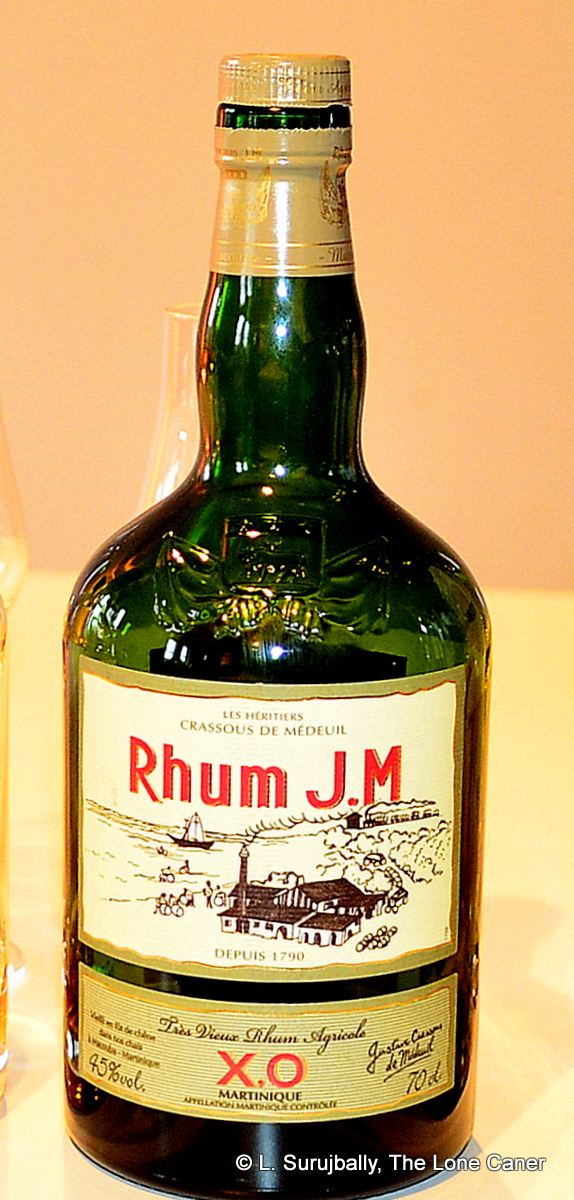 We hear a lot about Damoiseau, HSE, La Favorite and Trois Rivieres on social media, while J.M. almost seems to fall into the second tier of famous names. Though not through any fault of its own – as far as I’m concerned they have every right to be included in the same breath as the others, and to many, it does.
We hear a lot about Damoiseau, HSE, La Favorite and Trois Rivieres on social media, while J.M. almost seems to fall into the second tier of famous names. Though not through any fault of its own – as far as I’m concerned they have every right to be included in the same breath as the others, and to many, it does.
Situated in the north of Martinique, J.M. began life with Pére Labat, who was credited with commercializing and proliferating the sugar industry in the French West Indies during the 18th century. He operated a sugar refinery at his property on the Roche Rover, and sold the estate to Antoine Leroux-Préville in 1790 – it was then renamed Habitation Fonds-Préville. In 1845, his daughters sold the property again, this time to a merchant from Saint-Pierre names Jean-Marie Martin. With the decline in sugar production but with the concomitant rise in sales of distilled spirits, Jean-Marie recognized an opportunity, and built a small distillery on the estate, and switched the focus away from sugar and towards rum, which he aged in oak barrels branded with his initials “JM”. In 1914 Gustave Crassous de Médeuil bought the plantation from his brother Ernest (it would be positively karmic if Ernest was a descendant or relative of Jean-Marie, but it remains unknown), and merged it with his already existing estate of Maison Bellevue. The resulting company has been family owned until recently, when Spiribam, the Hayot-family-controlled drinks conglomerate that also owns Clement and St. Lucia Distillers, bought a majority shareholding and put an end to one of the last independent single domaine plantations on Martinique.
The company makes various general blended rhums like the whites, the VO, VSOP and XO, as well as a ten and fifteen year old rum. The 45% ABV XO is one of the core range of rums JM produces, no particular year of make (otherwise it would be stated on the label and noted as being a millesime), always a minimum of six years old, made in quantity, consistent in taste and quality, and pretty widely available.
Right off, I enjoyed the smell when the bottle was cracked: luscious, well rounded ytet also a tad sharp – let’s call it crisp for now – with bags of soft tangerine zest, honey, vanilla and fudge. It lacked much of that true herbal, grassy aroma which characterizes an agricole, yet its origin in cane juice was clear, hovering behind softer hints of marshmallow smores, caramel and white chocolate.
Palate, more of the same, with a few extra herbs and spices thrown in for good measure, quite firm and bordering on sharp. So, some dill, cardamom, cloves, wet grass, dusky flowers (like lilies but thankfully fainter), plus softer tastes of peanut butter (the crunchy kind), caramel bon bons, rye bread and a sharp cheddar. The finish was the bow tie, not adding anything much, just summing up the notes: medium long, warm, a tad sharp with less florals and more coffee grounds, oak and cinnamon.
This was good drinking, good sipping. I particularly liked the fact that the J.M.’s inherent qualities kinda crept up on me without hurry: at first there was nothing bad about it, nor anything amazing, just decent quality – one could as easily mix it as sip it. Then a few extra notes began to sound, a few more joined in, and when it all came together at last I was left with a rhum that didn’t seem to have a whole lot of world-beating points of excellence – but what it had, it presented with aplomb. I finally came to the conclusion that the J.M. XO was a good rhum for both general audiences and those on a budget, a near perfect middle of the road product which didn’t seem like it was reaching for anything…but made one realize, after the party was over, that every target it was aiming for, it hit.
(#645)(83/100)